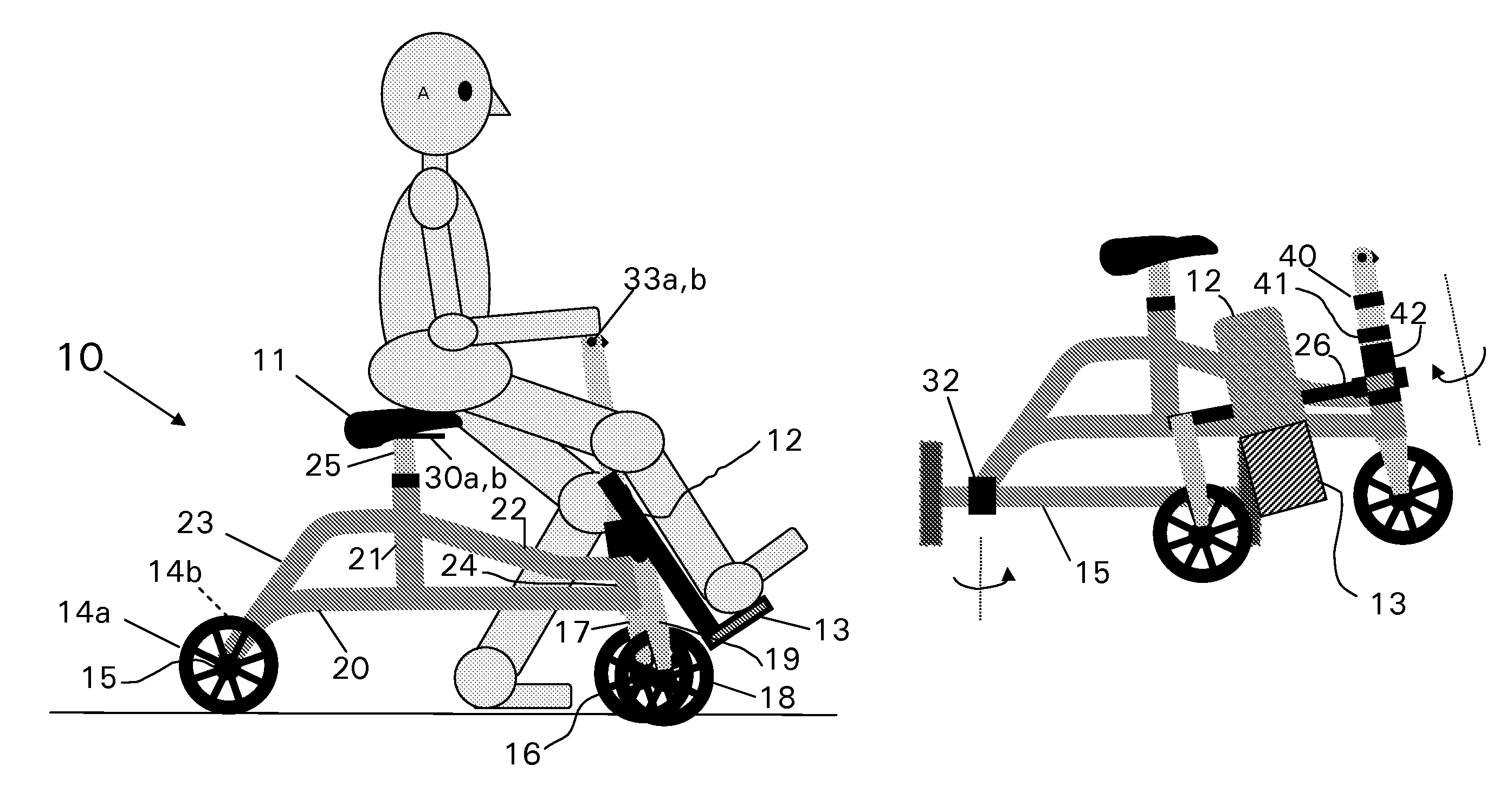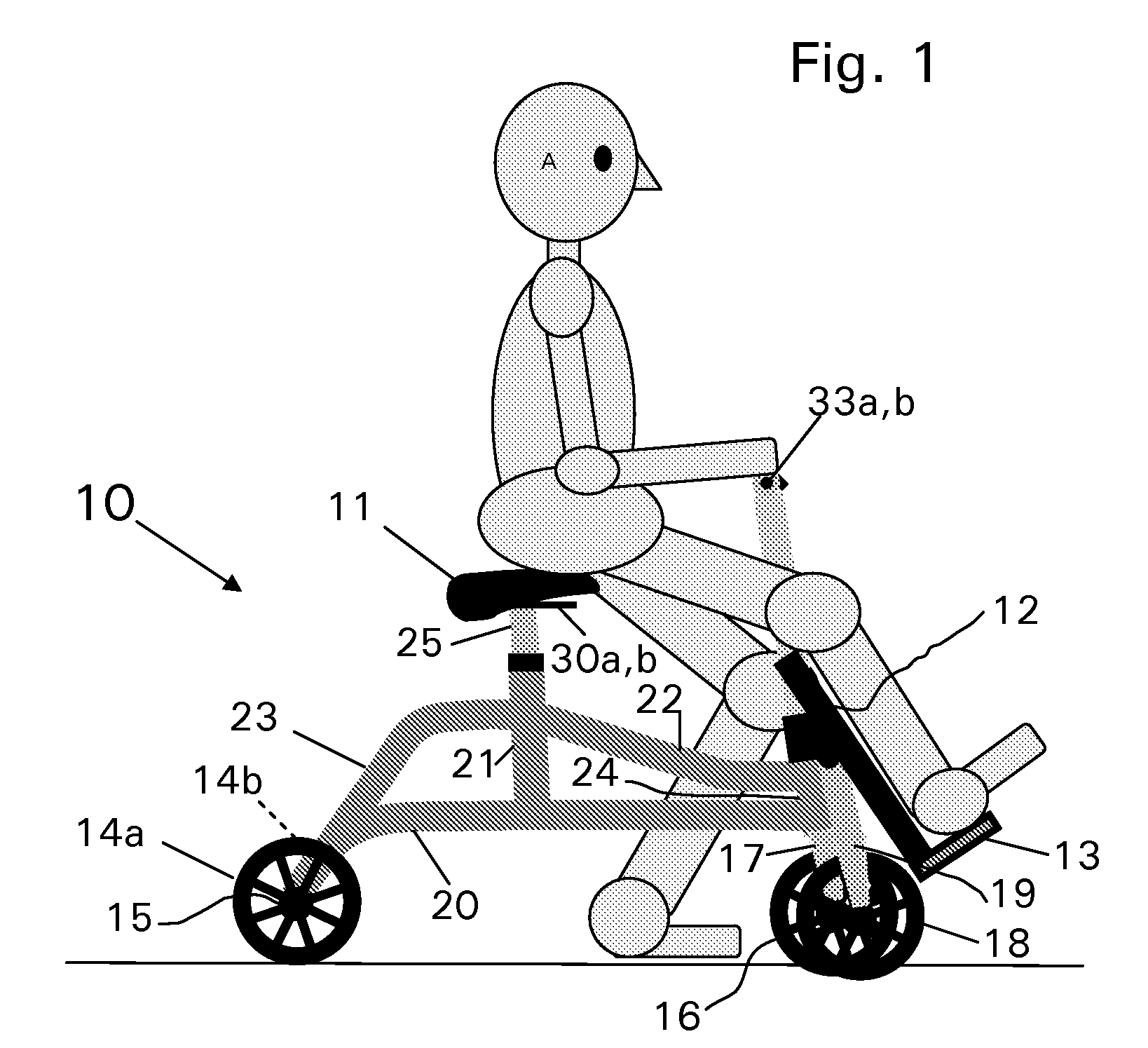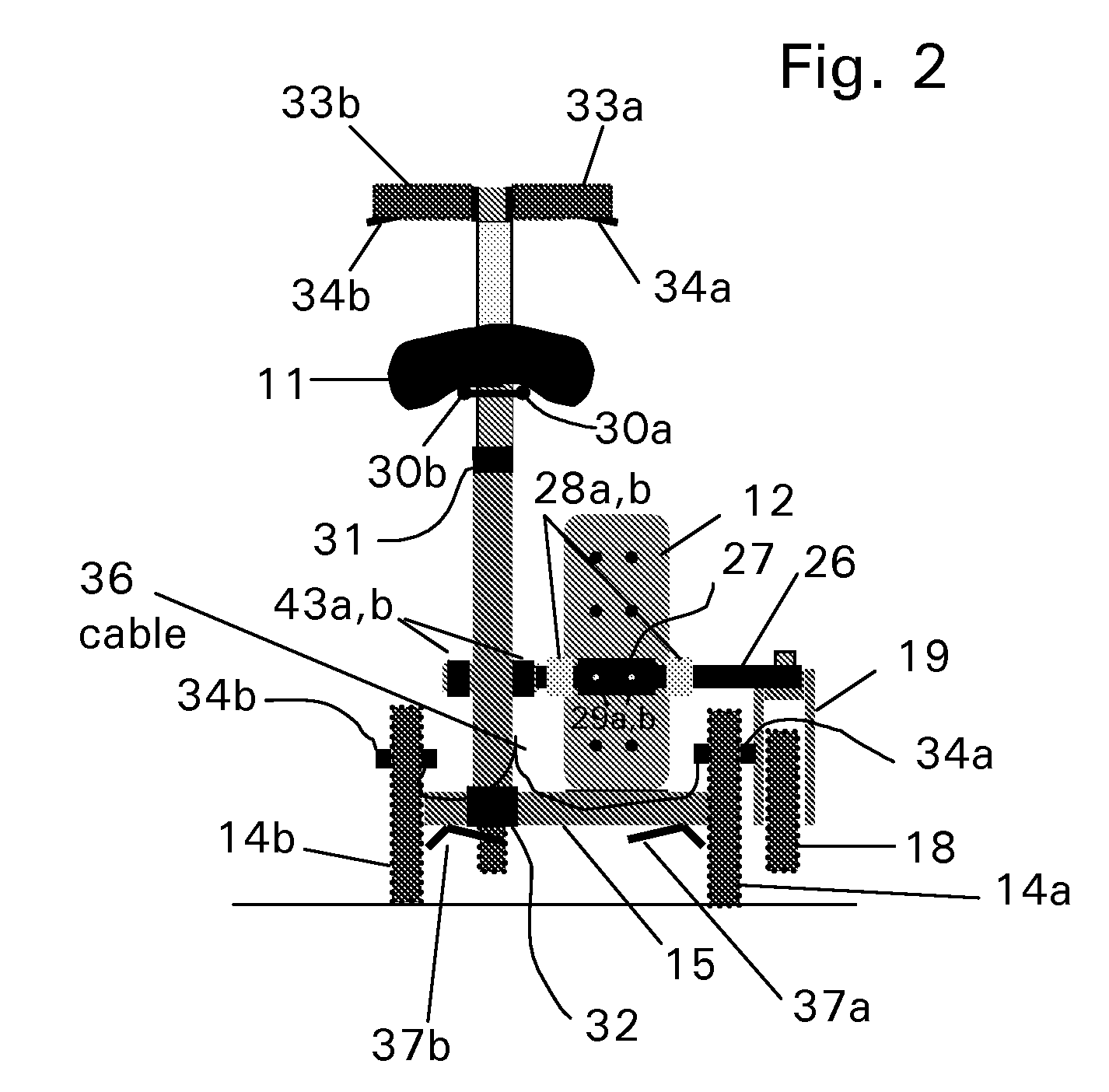Sitting orthopedic mobility scooter
a mobility scooter and orthopedic technology, applied in the direction of steering devices, friction rollers based transmission, cycle equipment, etc., can solve the problems of limited use of the above-mentioned walker, three inventions that do not provide support for an injured leg or foot, and do not allow the occupant to take optimal advantage of the full strength and stride of the healthy leg used to propel the scooter. to avoid the effect of slipping and falling on the curb, ramps, and doorways
- Summary
- Abstract
- Description
- Claims
- Application Information
AI Technical Summary
Benefits of technology
Problems solved by technology
Method used
Image
Examples
Embodiment Construction
[0018]The present invention comprises a wheeled scooter designed for individuals requiring assistance with walking. The unique aspects of the present invention include, but are not limited to, inclusion of a padded seat to support the weight of a person in a sitting position and a padded surface to support a compromised leg, as well as the ability of the scooter to be configured for either a compromised left leg or right leg, and the ability to propel the scooter using the healthy leg. Unlike the devices of the prior art, the present invention overcomes the problem of being limited to injuries below the knee by providing a means for the occupant to remain in a sitting position while propelling the scooter and by providing full support of a compromised leg. The device overcomes the limitation of the prior art of not being suitable for navigating up or down street curbs by providing a design with high vertical clearance and low center of gravity to maintain stability. The prior art al...
PUM
 Login to View More
Login to View More Abstract
Description
Claims
Application Information
 Login to View More
Login to View More - R&D
- Intellectual Property
- Life Sciences
- Materials
- Tech Scout
- Unparalleled Data Quality
- Higher Quality Content
- 60% Fewer Hallucinations
Browse by: Latest US Patents, China's latest patents, Technical Efficacy Thesaurus, Application Domain, Technology Topic, Popular Technical Reports.
© 2025 PatSnap. All rights reserved.Legal|Privacy policy|Modern Slavery Act Transparency Statement|Sitemap|About US| Contact US: help@patsnap.com



